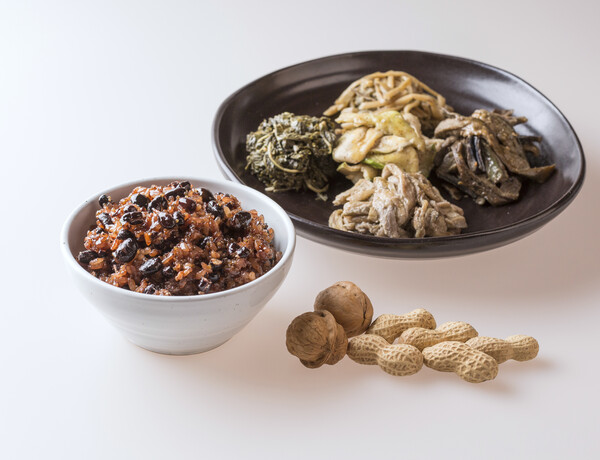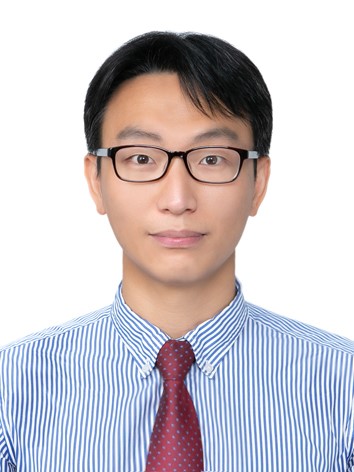My Feb. 22 post on X, formerly Twitter, garnered 412,000 views, 723 retweets, and 709 likes as of March 1 at noon. Two days before Daeboreum, a Korean holiday commemorating the first full moon of the New Lunar Year, I shared a brief insight into its significance and attached a photo showcasing traditional Daeboreum cuisine, comprising multigrain rice and seasoned herbal dishes. During the festival, a combination of five-grain rice, assorted seasoned herbs, and nuts is typically consumed. This kind of meal aligns with the healthy dietary principles I have advocated and can be called a Korean version of Mediterranean cuisine.

You might wonder why I dedicate time to social media instead of focusing solely on medical practice and research. Crafting a short post may not be very difficult but it requires considerable mental effort to think about whether I've made a mistake or how my post will be received. Sometimes l spend a lot of time checking users' reactions. Despite this, my experiment using social media stems from a sense of professional obligation that I've harbored for quite some time.
There is a prevalent attitude among professionals, including scientists and doctors: helplessness. Scientific clinical studies and announcements of new drug developments often imply that improving lifestyles is fundamentally impossible. Also, there's a sense of frustration associated with being viewed as an expert confined within an ivory tower. Despite having a paper published in a top international journal, its reach may be limited, garnering only a few thousand views over the years. Although the internet provides abundant health information, it is also inundated with commercially biased and false content. In light of this uneven playing field, I endeavored to make a positive impact, even if it may be small.
How can we change people's behavior to be healthier? I looked to Singapore's Blue Zone 2.0 concept, a policy-designed longevity village, as a benchmark. They implement enforcement measures like punitive taxes on alcohol consumption to promote healthy aging. While Singapore's policies have yielded significant results, introducing them in Korea is challenging due to differences in policy decision-making systems, population size, and land area. Singapore's population of over 6 million and land area of 728 square kilometers are just 11.7 percent and 0.73 percent of South Korea's, respectively. Any effective solution for Korea must avoid coercion.
I wondered if a healthy lifestyle could be fun, cool, and trendy. Choosing to embrace the Blue Zone lifestyle in essence, I drew inspiration from Richard Thaler's concept of “Nudge.” This term, derived from the English word "to nudge with the elbow," entails a gentle form of intervention that nudges individuals in a desirable direction without imposing choices upon them. For instance, during the Lunar New Year holidays, I would share posts emphasizing the significance of sleep and encourage people to prioritize catching up on rest during the festive period.
My main target age group on social media is people in their 20s and 30s. This demographic focus stems from the alarming trend of deteriorating health among young Korean adults, which has reached a critical level. Data from the Korea Health Insurance Service reveals a concerning rise in chronic diseases among individuals in their 20s and 30s, outpacing even middle-aged populations. For instance, the number of individuals with hypertension in this age group reached 223,779 in 2022, a 45 percent surge compared to 2012. This growth rate in those in their 20s and 30s with hypertension was the highest among all age groups. Moreover, the incidence of diabetes per 10,000 individuals under 30 has been steadily increasing, particularly since the 2010s. This trend is closely associated with the substantial rise in average daily sugar intake among Koreans, from 5.17 grams in 1961 to 133.48 grams in 2017. The objective is to positively alter the health trajectory as early as possible, recognizing that managing health from a young age not only impacts future disease profiles but also influences overall quality of life, including frailty in old age.
To appeal to people in their 20s and 30s, I've drastically reduced the amount of text and made it simpler, sometimes with just a single photo. These concise posts have the potential to go viral, as one did on Feb. 24, receiving 1.4 million views in about 24 hours.
On X, I “follow” users who lead a healthy lifestyle or have expressed interest in it. Following someone allows me to see their posts. When I encounter posts from users practicing healthy habits, I respond by clicking “Like.” This serves as a psychological reward, motivating them to adopt and uphold healthy behaviors. Additionally, other users who follow me will see my posts, potentially inspiring them to do the same. It creates a virtuous cycle of nudges, encouraging healthy habits across the platform.
The impact is becoming evident. The dietary regimen I introduced on X, known as “slow aging rice,” is gaining traction. During the recent Daeboreum festival, numerous posts surfaced, labeling the traditional festival meal of five-grain rice, namul (seasoned herbs), and bureom (nuts) as a "slow aging holiday." Many individuals proudly proclaimed their consumption of this meal by sharing pictures on X. Some admitted trying slow-aging rice despite initial disinterest, while others reported adhering to it for some time. Notably, several individuals shared moments of overcoming the temptation to indulge in unhealthy foods, citing my influence. While I am happy for all of them, the most gratifying moments are when I encounter posts from people who have improved their health by adhering to a healthy diet.
The solution to the decline in birthrates isn't to blame those in their 20s and 30s for delaying marriage and parenthood who lack time and mental bandwidth for self-care. Instead, the focus should be on promoting the health and happiness of young people, which can naturally address this issue. Encouragingly, adopting healthier eating and exercise habits has been proven to enhance sleep quality and lower stress hormone levels, leading to a positive cycle that improves cognitive function, mood, and overall quality of life. Additionally, it fosters greater compassion among individuals. By prioritizing the well-being of our bodies and minds, we collectively increase the likelihood of achieving health and happiness as individuals and as a society. This, in turn, can lead to a natural recovery in birth rates, which serve as an indicator of societal stress. I hope that my social media experiment contributes to improving people's health and happiness.

Jung Hee-won, a geriatric physician at Asan Medical Center, graduated from Seoul National University College of Medicine and trained at Seoul National University Hospital. During his med-school days, while practicing the horn, he realized the importance of muscle maintenance and became interested in sarcopenia. His main research interests include frailty, sarcopenia and establishing age-friendly health systems for acute hospitals. This column was originally published in Chosun Ilbo in Korean on March 6, 2024. -- Ed.
Related articles
- [Column] Seatless subway in Seoul is like a game of musical chairs
- [Column] Should every older adult end up in nursing homes? No, we can slow the trend.
- [Column] ‘Decline in strength during old age stems from indulgences in youth’
- [Column] Need ₩1 billion for retirement? It's fear marketing by banks and insurers
- [Column] The median age at which you’re treated as an adult is 45, not 30
- Now that cancer treatment is over, is it okay to drink?
- [Column] What matters is patient-centric healthcare, not the 2,000-seat increase

